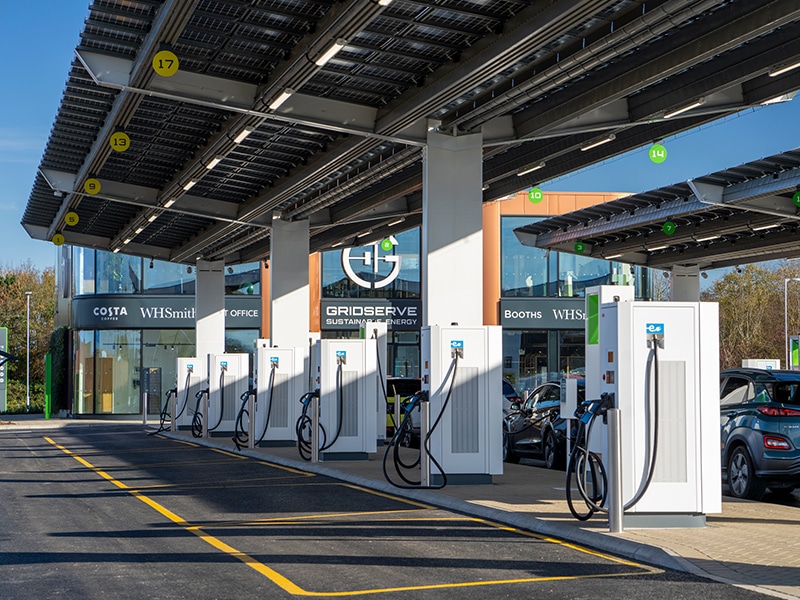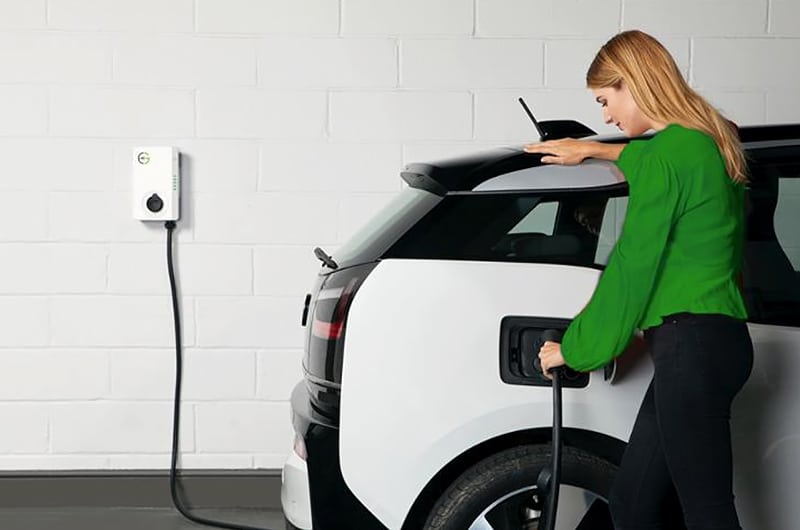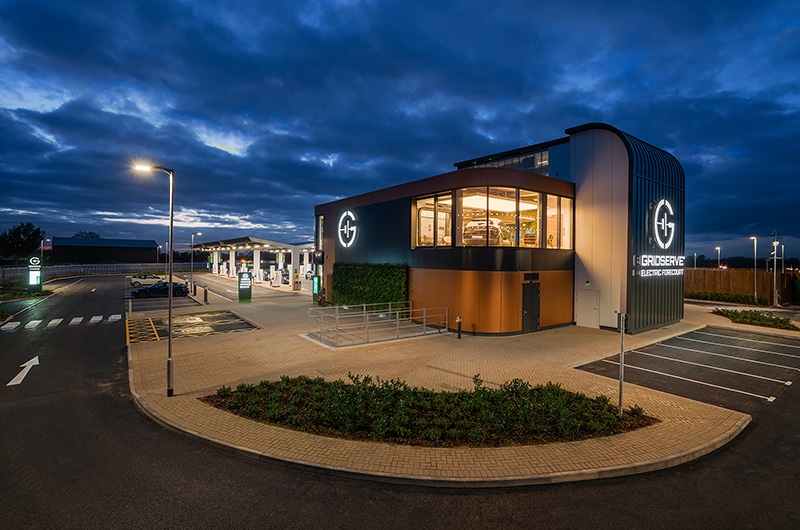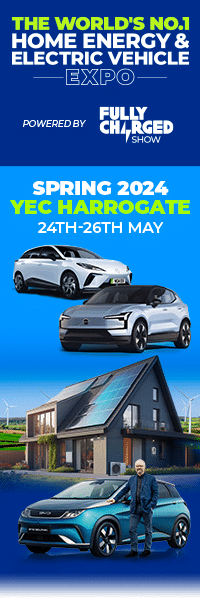
The debate about the right charging infrastructure in the right places is here to stay. As more Electric Vehicles (EVs) land on UK roads this topic is only going to amplify. As a user of EVs and the infrastructure both privately, commercially and publicly for over 15 years, here’s my take, and it won’t please everybody.
Home charging
Charging at home is clearly the most practical, convenient and affordable method of charging an EV. Almost all UK domestic dwellings can provide a meaningful level of power to comfortably charge an EV during a dwell time whilst we are busy sleeping.
Furthermore, with the advent of smart charging, vehicle to grid and time of use tariffs, not only is it the cheapest way to charge your car but it has the potential to actually make you money. On a handful of occasions this year my electricity supply has plunged into what is called ‘negative pricing’ which means the utility provider is paying me to charge my car using excess energy on the network.
This of course is all well and good if you not only have off-street parking but the ability to install a charger where you park. Various statistics exist on this topic, but broadly speaking research suggests that anywhere between 50%-60% of UK households are unable to charge an EV now or in the future in this way. So there needs to be a realistic alternative, more on this later.

Workplace charging
Workplace charging in many ways replicates the opportunity that home charging does. In the same way your car can charge at home while you sleep, you can charge at work while you work. But not all of us can enjoy this solution as only two thirds of us drive to work and only 5% of employers currently offer workplace charging. Whether or not your employers expect you to contribute towards this benefit is up to them, but either way it is unquestionably cheaper to charge an EV than to fuel an ICE (Internal Combustion Engine) car meaning EVs are already an overall cheaper option.
Whilst many EV models remain more expensive than their petrol counterparts, the running cost alone more than compensates for this before you even consider such things as road tax, emission zone levies or BIK (Benefit in Kind tax). At GRIDSERVE we help our customers understand these values in detail to ensure that the education piece is not overlooked, and that people really understand the true environmental and monetary benefits of travelling by EV. In addition, we now offer Electric Vehicle Solutions whereby you can lease a vehicle directly through us. For more information and to see our latest deals please click here.

Public charging
So, this is where the debate gets really interesting.
Even if you had an EV, your own driveway and could charge at work, you will almost certainly wish to access charging somewhere else during your day-to-day life. For example, on those trips up to Scotland to see a relative, which is a frequently used reason given by naysayers as to why they could never have an EV.
If you have no access to charging at home or at work the switch to an EV could currently be a very daunting one. Many companies have chosen to propose on-street solutions such as curb side bollards or lamppost charging in an attempt to provide an alternative. On the face of it this seems a logical and convenient approach, however sadly it isn’t.
Only 1% of the current car and light commercial vehicles on the road today are electric. As is already evident by virtue of the huge increase in EV sales (even during a pandemic) and in light of recent news on the ban of petrol and diesel cars by 2030, electric vehicles will be the next major transport shift in this generation and that 1% is going to see exponential growth throughout this decade.
The problem with AC on-street charging is that in order to address the EV uptake, every single parking bay would need a charge point in order to make that solution dependable and also assumes the local electrical grid could handle the additional demand. Unless you know, without a doubt, that every time you park you can charge, given this is potentially your only means to do so, you simply wouldn’t take the leap and switch to fully electric. I know I wouldn’t. And this speaks nothing of the endless trip hazards that trailing cables would create or the astronomic costs of trying to get thousands of chargers onto our streets via planning constraints of local government or indeed the legacy of ICE cars that will still be competing for the same space on the streets for years to come. Finally, there is little or no evidence that can demonstrate, with real numbers and not projections, that there is a commercial business case for on-street charging.
As a potential alternative, there is perhaps also some room for charging at locations where we would dwell for some time such as a supermarket, shopping centre car park or cinema.
But arguably, the next best alternative we currently have to off-street home charging is ‘rapid charging’. The most popular method for this currently is c. 50kW DC or more which very broadly can charge an EV from 20%-80% in around 40-60 minutes.
Of the c.12,800 public charging locations today only c.2,500 of those are deemed ‘rapid’. However, on average there are just two connectors per device (and you can only use one at a time) and between one and two devices per location. And so again this is not a solution for mass adoption as there will simply be too many EVs on the road for single or double units dotted around the country in obscure locations to facilitate the demand.
So what is the future of Electric Vehicle charging?
Well, in my humble opinion, automotive OEMs will continue to bring cars with higher voltage, bigger, faster battery packs and so DC charging times will keep dropping to a point where 10-15 minutes becomes the norm. Slow AC street furniture will become less and less relevant as the impracticality of the solution sinks in, let alone the economics of the business case.
Whilst looking great as pins on the map, a sporadic distribution of 50kW chargers tucked away in hard to reach locations (and often unreliable) is simply not somewhere you’ll want to use in the future for risk of having to wait 40 minutes just to plug in because it’s already occupied. This is already happening to me regularly.
Whilst becoming obsolete day by day, the concept of petrol stations work. The problem with them however is they will be forever constrained by the legacy of the petrol they need to sell for years to come and so are not places where large scale, replicable charging infrastructure can be easily be installed.
For us ‘pioneers’ and ‘early adopters’, charge anxiety and range anxiety have not just been buzz words but cold hard reality, as has the heartbreak of arriving to a faulty charger and learning that somebody will be out to fix it….in the next week! The next slice of Dan’s Fully Charged onion is the ‘early mainstream’. They will settle for nothing less than 100% availability, 100% reliability, 100% of the time. As an industry, public charging infrastructure must deliver this from day one. So, charging needs to be convenient, reliable, and dependable which, to the petrol station’s credit, they deliver now and this is what the public will expect from EV charging too.
And so the only logical, quick, reliable and practical solution for charging an EV (aside from at home or work) is where you have locations with at least 6 DC high-powered chargers today. Or, better still, in a place like the GRIDSERVE Electric Forecourt® where every need is catered for and with 36 chargers, 12 of which are already capable of speeds up to 350 kW, and is not only dependable but future-proofs the viability of electric vehicles, not just today but for years to come.

GRIDSERVE Braintree Electric Forecourt opens 7th December

About the author
Sam Clarke is a long term EV evangelist, industry advisor, EV driver and operator for over 15 years. He was a 2015 merit winner at the Great British Entrepreneurs Awards and in 2020 was voted #36 in the greenfleet.net top 100 most influential people in Low Carbon Fleets. Sam is also a regular public speaker and permanent sofa panellist for the EV Café. Most recently, Sam became GRIDSERVE’s Chief Vehicle Officer to drive forward mass uptake of electric vehicles particularly through EV vehicle leasing and the build out of a nationwide network of high-powered Electric Forecourts.





